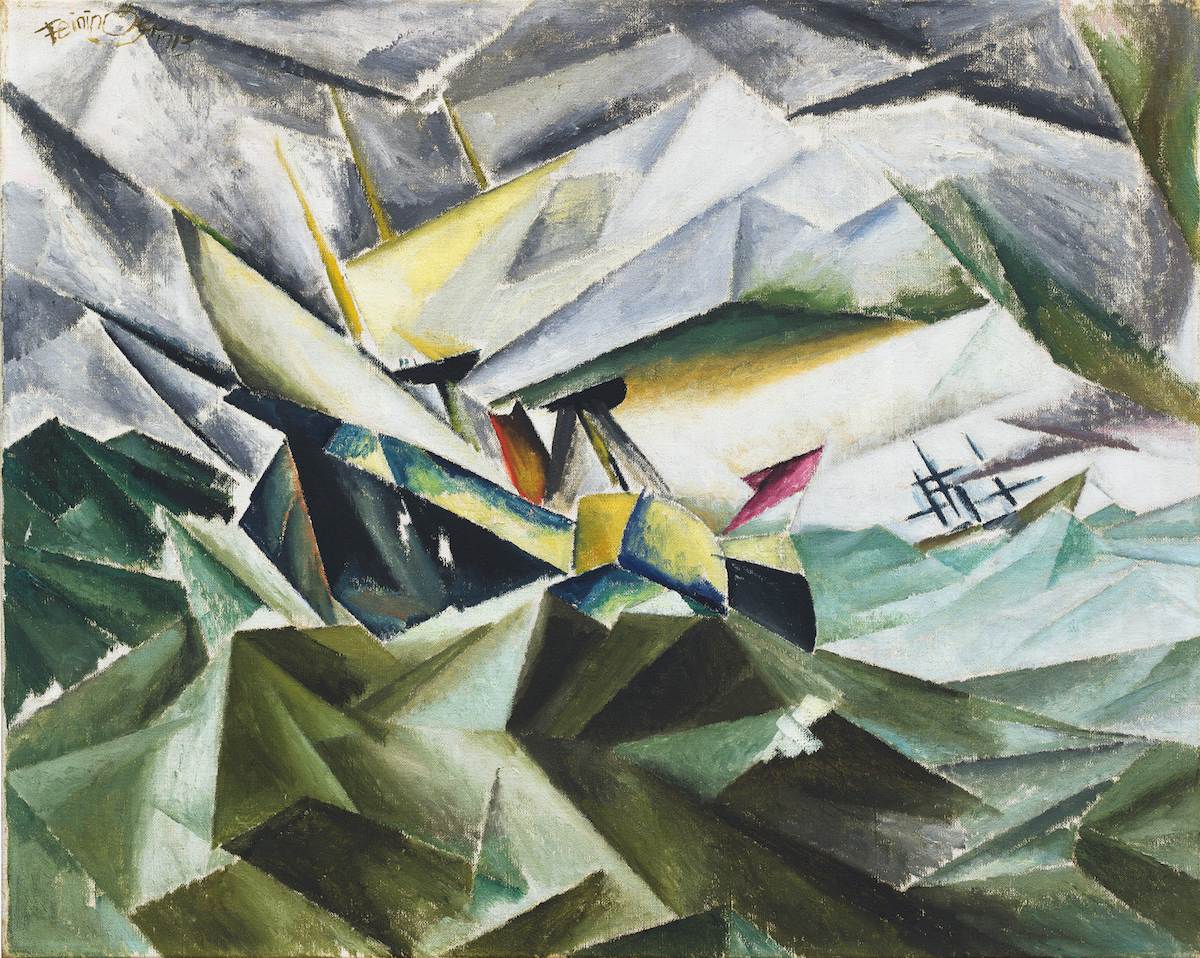Oil on canvas
80 x 100 cm
Hilti Art Foundation
Lyonel Feininger started out as a caricaturist and illustrator and did not take up painting until 1907. Initially, the human figure continued to predominate, often grotesquely elongated and «skewed». Soon however, his paintings would show the influence of Cubism and Orphism, while the new visual syntax that he discovered through his study of Picasso and Delaunay led to a kind of crystalline chromatic Cubism. As a young man, Feininger already felt an affinity for seascapes, not least in consequence of his voyage by ship from New York to Hamburg.
With paddlewheel and sail, the Raddampfer (Paddle Steamer) battles the waves of the turbulent waters. Smoke billowing out of the chimney is swallowed up by the agitated winds. Another ship appears on the horizon with sails lowered, taking a course against the wind. Everything is in motion, the raging elements give the eyes no rest. In Raddampfer, the contest between nature and technology shows the features of Cubism, or, as Feininger described his style in 1913, of «prisma-ism». Objects, fragmented into facets, yield a crystalline composition of angular, interacting planes. Cubism was motivated more by form than by colour. This de-sensualisation of painting met with resistance from the Orphists, especially Villon, Delaunay and Kupka, who adopted the structural composition of Cubism but animated it with the vibrant, prismatic colours. However, Feininger was also extremely interested in colour, so much so, in fact, that it would actually become his medium, and fostered his responsiveness to the almost romantically inclined ideas of Orphism.
The bold colours of the paddle steamer are pitted against the greys and greens of sea and sky. Dark is the hull of the ship, while railing, paddlewheel, sail, chimney, smoke plume and flag are conspicuously rendered in yellow, green, ochre, orange and a reddish purple. Lyonel Feininger applied dry, rough pigments to his coarse canvas, the white of which shimmers through here and there between the patches of paint.
Uwe Wieczorek
